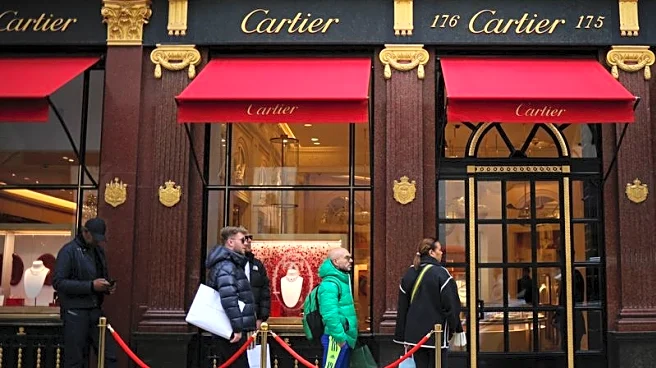What's Happening?
Richemont, the owner of Cartier, reported a 14% increase in quarterly sales at constant exchange rates for the July-September period, beating analyst forecasts. The company faced 'unprecedented' challenges,
including currency movements, rising gold prices, and U.S. tariffs. Despite these obstacles, Richemont's sales in the Asia-Pacific region, particularly China, rose by 10%, while sales in the Americas surged by 20% when currency effects were removed. The U.S. remains Richemont's largest market, accounting for 22% of sales.
Why It's Important?
Richemont's ability to exceed sales forecasts despite economic challenges underscores its resilience and strategic positioning in the luxury market. The company's strong performance in the Americas and Asia-Pacific regions highlights the importance of geographic diversification in mitigating risks associated with tariffs and currency fluctuations. This success may encourage other luxury brands to adopt similar strategies to navigate economic uncertainties and capitalize on emerging market opportunities.
What's Next?
The U.S. and Switzerland are moving closer to a trade deal that could reduce tariffs on Swiss imports, potentially easing economic pressures on Richemont. The company is optimistic about the festive season, expecting continued growth. Stakeholders in the luxury sector will be closely monitoring these developments, as they could influence market dynamics and consumer spending patterns.
Beyond the Headlines
Richemont's strategic focus on jewelry, rather than fast-moving fashion, has helped it weather the luxury sector's recent slump better than peers. This approach, coupled with a steady pricing policy, has allowed Richemont to avoid the 'greedflation' that has affected other luxury brands, positioning it favorably in the market.












